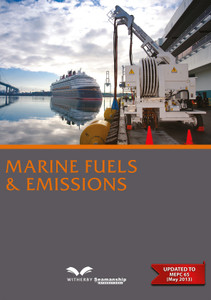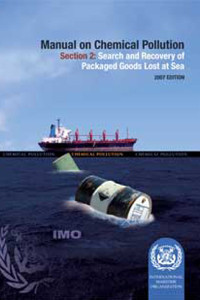
This publication provides the reader (in particular on-scene commanders, response personnel, government entities and others involved in the management and/or response to pollution incidents involving Hazardous and Noxious Substance (HNS)) with a description of the various interests involved in an HNS incident and its aftermath. This includes a general review of the international legal regimes governing the various aspects of HNS, ranging from prevention, preparedness and response through to liability and compensation.
This publication aims to provide the reader, in particular on-scene commanders, response personnel, government entities and others involved in the management and/or response to pollution incidents involving hazardous and noxious substance (HNS), with a description of the various interests involved in an HNS incident and its aftermath.
Foreword
The Manual on Chemical Pollution currently has three sections. Section 1, Problem Assessment and Response Arrangements, first published in 1987 and revised in 1999, provides guidance to Governments on ways of assessing hazards associated with spills of harmful substances other than oil and of setting up response organizations. It describes safe operational practice in spillage response and appropriate training. Section 2, Search and Recovery of Packaged Goods Lost at Sea, published in 2007, provides guidance to Governments on search and recovery procedures for packaged goods lost at sea to which the provisions of chapter VII of SOLAS 1974, as amended, and Annex III of MARPOL, as amended, apply. The present publication, section 3, Legal and Administrative Aspects of HNS Incidents, was prepared by the OPRC-HNS Technical Group, formerly a subsidiary body of Marine Environment Protection Committee (MEPC) of the International Maritime Organization (IMO), and approved by the MEPC at its sixty-sixth session in 2014.
The addition of this new section to the Manual on Chemical Pollution series was approved by MEPC at its fifty-fourth session with a view to addressing the legal and administrative aspects of HNS incidents, based on the need to assist Governments in the implementation of the Protocol on Preparedness, Response and Co-operation to Pollution Incidents by Hazardous and Noxious Substances, 2000 (OPRC-HNS Protocol 2000). It aims to provide the reader, in particular on-scene commanders, response personnel, government entities and others involved in the management and/or response to pollution incidents involving hazardous and noxious substance (HNS), with a description of the various interests involved in an HNS incident and its aftermath. This section is not intended to provide an authorized or definitive commentary on the legal relationships between the various entities involved in an HNS pollution emergency or an interpretation of relevant international conventions, but rather to provide a guide to the various elements and instruments to be considered when establishing a comprehensive regime for addressing HNS.
It should be noted that the risk and resulting response to incidents involving HNS can vary significantly from the response to marine oil spills. The safety of personnel and the public is of paramount importance for HNS incidents, given the significant potential and immediate threat to human health in comparison to an oil spill, depending on the nature of the substance or substances involved and the type of incident encountered.
Problems related to oil pollution casualties and related information are specifically addressed in the IMO Manual on Oil Pollution, Sections I to VI.
Foreword
Glossary
Chapter I - Introduction
Chapter II - Roles and functions of entities which could be involved in an HNS pollution emergency and its aftermath
Chapter III - Proposed information to be developed by States considering becoming party to the Protocol
Chapter IV - Liability and Compensation Regarding Marine Pollution Incidents Involving HNS
Chapter V - International Conventions, Codes and Guidelines Involving HNS
Annex I – Lloyd’s Standard Form of Salvage Agreement (Lloyd’s Open Form) 2011
Annex II– Reference documents
A??s a specialized agency of the United Nations, IMO is the global standard-setting authority for the safety, security and environmental performance of international shipping. Its main role is to create a regulatory framework for the shipping industry that is fair and effective, universally adopted and universally implemented.
In other words, its role is to create a level playing-field so that ship operators cannot address their financial issues by simply cutting corners and compromising on safety, security and environmental performance. This approach also encourages innovation and efficiency.
Shipping is a truly international industry, and it can only operate effectively if the regulations and standards are themselves agreed, adopted and implemented on an international basis. And IMO is the forum at which this process takes place.
- Number of Pages:
- 60
- Published Date:
- August 2016
- Book Height:
- 250 mm
- Book Width:
- 210 mm
- Author:
International Maritime Organization
- ISBN:
- 9789280116144
- Binding Format:
- Paperback
- Preview:
- Yes






